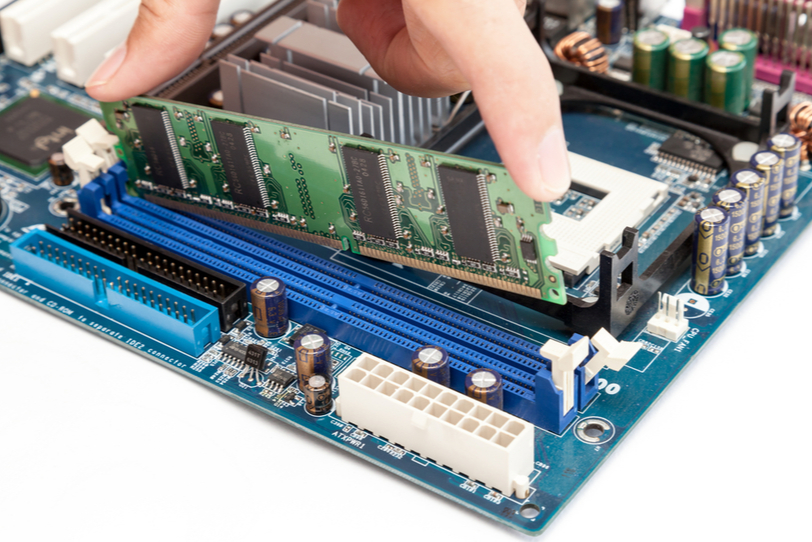How To Check Free Ram Slots
I am basically away from my office, but would like to check whether a pc (which has 4GB of RAM) has 4x 1GB DIMMs or 2x 2GB DIMMs. I am referring to a windows XP system. Is it possible to gather t. Windows Memory Diagnostic is a free memory tester provided by Microsoft. Very similar to other RAM test programs, Windows Memory Diagnostic performs a series of extensive tests to determine what, if anything, is wrong with your computer memory. Check Empty RAM Slot in your Laptop or PCFacebook Page: on twitter:: http://w. Millions of customers have trusted the Crucial System Scanner to find memory and storage upgrades. In minutes, learn how much memory and storage your PC or Mac can support, then buy 100% guaranteed compatible upgrades with confidence.

No - it only shows the memory modules installed - to check for free slots you need to look at the server documentation to see how many memory slots are available for the server - which model of machine is it? Stewart Futers Senior Technical Consultant Software Dynamics 'John CLARK via ibm-aix-l' 12:06 Please respond to.
I’ve reviewed before whether adding more RAM (memory) can make a computer run faster. The article gave a general guide to RAM requirements and showed how to find out if a computer would benefit from more RAM.
If you do need to add more RAM (or replace existing RAM modules with larger capacities), how can you find out which type of RAM you need to buy?Here are 2 simple ways to find out which type of RAM you need to buy.
1. Speccy – Speccy is a free system information tool from Piriform – the company behind Ccleaner (which we have recommended before as the best way to delete temporary files from a computer).
See our separate review of Speccy for more details and how to download. Run Speccy and select the RAM tab as shown below:
The ‘SPD’ section shows that there are 2 modules (sticks) of RAM – 1 per slot. The type is DDR2 and the size of each stick is 1024MB which is 1GB – i.e. 2GB RAM in total. The ‘Max Bandwidth’ category is the specification of the RAM – in this case it is PC2-5300.
Armed with this information we now know everything we need to buy more RAM. In this case there are only 2 RAM slots and both are already used so we would probably look for 2 x 2GB sticks of PC2-5300 DDR2 RAM to replace the current memory and provide a new total of 4GB.
2. Crucial.com Scanner Tool – Alternatively, the Crucial System Scanner can automatically analyze your computer and suggest a compatible RAM upgrade. [I’m not endorsing Crucial as a supplier but you can use the tool whether you buy from them or not]
Visit the Crucial Scanner website, tick the box to agree to the T&Cs then Download the Scanner – save it to desktop then run it. The scan results open in your web browser and should reveal the following:
- Memory type (this is the specification – PC2-5300 DDR2 in our example above)
- Maximum memory supported by the motherboard
- Amount of currently installed memory
- Number of RAM slots
- Number of available (empty) RAM slots
RAM Upgrade Tips
Before adding RAM, double check inside the computer first to ensure there is a slot free to take the new RAM – and that it is easily accessible:
- PCs usually have at least 2 RAM slots – some may have 3 or 4+
- Laptops and netbooks usually have 2 RAM slots but sometimes only 1 – or the second is very hard to access without substantial disassembly…
Before upgrading or adding RAM, always check that the motherboard is compatible – both with the new module RAM size and the total amount of RAM:
- For laptops and big-brand PCs, the manufacturer’s website should reveal this information.
- Alternatively, Speccy displays the motherboard make/model on the Motherboard tab:
- In this example, the motherboard is a P5N-MX made by ASUS – a quick Google search led to the detailed specs on ASUS website which showed that it supports a maximum of 4GB.
How To Check Free Ram Slot
Check your Windows version:
How To Check Free Ram Slots Online
- 32bit versions of Windows can only access/use a maximum of up to 3.5GB of RAM – so upgrading to 4GB and beyond is pointless.
- 64bit versions of Windows can access/use more – up to 8GB on Basic versions and up to 16GB on Home Premium versions. However, unless you have applications that require (or can use) such huge amounts of RAM, most computers will not gain much (if any) speed improvement from upgrading beyond 4GB.
Adding quicker RAM:

- You may be tempted to add RAM which is a quicker speed than your current memory e.g. PC2-6400 instead of PC2-5300. In theory, quicker RAM should be compatible with slower RAM of the same type – it will drop down its speed to match. However, we have seen motherboards which refuse to accept RAM modules of different speeds (or speeds that are higher than it was designed for) – do check motherboard compatibility carefully.
Conclusion

It isn’t difficult to check which type of RAM you need to upgrade (or replace faulty) memory but there are a few guidelines to be aware of. However, if a computer is running out of memory, adding more can be the most worthwhile and cost effective upgrade you can make.